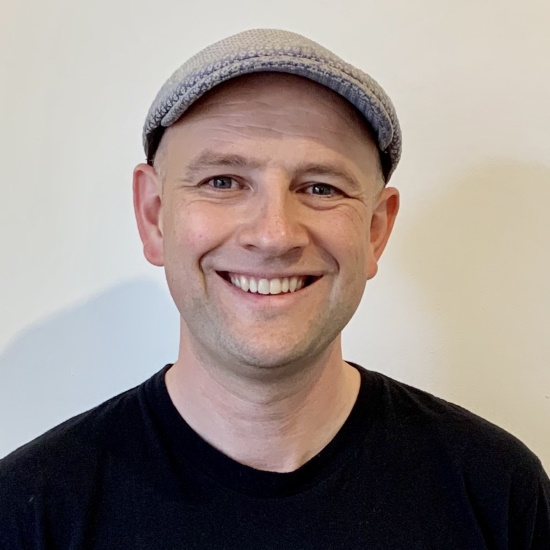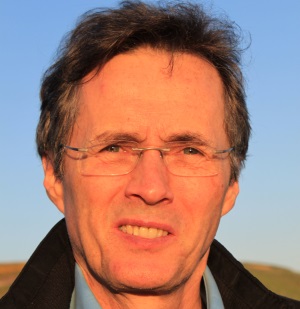Links to external sources may no longer work as intended. The content may not represent the latest thinking in this area or the Society’s current position on the topic.
Cell mimicry: bottom-up engineering of life

Scientific discussion meeting organised by Dr Yuval Elani, Dr David Lunn, Professor Thomas McLeish FRS, Dr Annela Seddon, Dr Tom Ellis, and Professor John Seddon.
This meeting explored the emerging area of artificial cell science. Specifically, bottom-up synthetic biology approaches were discussed, where molecular building blocks are brought together to yield protocells that mimic properties of biological systems. Biomimetic assemblies that traverse lengthscales (from sub-cellular structures to proto-tissues) were covered. There was a focus on potential applications of this research area.
The schedule of talks and speaker biographies and abstracts can be found below. Meeting papers will be published in a future issue of Interface Focus.
Attending this event
This meeting has taken place.
Enquiries: contact the Scientific Programmes team
Click watch on YouTube to view the full video playlist.
Organisers
Schedule
| 09:05 - 09:35 |
Synthetic cells: De novo engineering with DNA nanotechnology
Can we construct a cell from non-living matter? In search for answers, bottom-up synthetic biology has successfully encapsulated functional sets of biomolecules inside lipid vesicles, yet a “living” synthetic cell remains unattained. Instead of relying exclusively on biological building blocks, the integration of new tools can be a shortcut towards the assembly of active and eventually fully functional synthetic cells. This is especially apparent when considering recent advances in DNA nanotechnology. DNA nanotechnology allowed us to engineer various functional parts for synthetic cells, which, meanwhile have found diverse applications as biophysical probes in cell biology. Recently, we engineered functional DNA-based mimics of a cytoskeleton. These cytoskeletons are capable of stimuli-responsive reversible assembly, cargo transport and can deform giant unilamellar lipid vesicles (GUVs) from within. We further demonstrate the division of GUVs based on phase separation or spontaneous curvture increase and osmosis rather than the biological building blocks of a cell’s division machinery. We derive a parameter-free analytical model which makes quantitative predictions that we verify experimentally. The osmolarity increase can be triggered by enzymatic reactions or by light-triggered release of caged compounds. Ultimately, by coupling GUV division to their informational content and their function, we aim for a prototype of a synthetic cell capable of evolution. 
Dr Kerstin Gopfrich, Max Planck Institute for Medical Research, Germany

Dr Kerstin Gopfrich, Max Planck Institute for Medical Research, Germany
Biography will available soon
|
|---|---|
| 09:35 - 09:50 | Discussion |
| 09:50 - 10:20 |
Switches and circuits based on nucleic acid strand displacement
Nucleic acid strand displacement involves the invasion of a double-stranded complex of nucleic acids (a DNA duplex, an RNA hairpin, etc.), by another DNA or RNA strand with an appropriate sequence. This process has been widely used in dynamic DNA nanotechnology and underlies the operation principle of many DNA-based molecular devices. Strand displacement reactions can be rationally designed and are therefore particularly attractive also for the realization of synthetic control circuits, with applications in molecular computing and synthetic biology alike. In this talk, several examples for such applications will be discussed, including switchable CRISPR/Cas systems, RNA-based sensors and circuits. We will also address challenges associated with the operation of strand displacement in complex environments and potential uses in the context of synthetic cells. 
Professor Friedrich Simmel, Technical University of Munich, Germany

Professor Friedrich Simmel, Technical University of Munich, GermanyFriedrich Simmel studied physics at the Ludwig-Maximilians-University Munich (LMU), where he also obtained his PhD (in 1999). As a postdoctoral researcher in Bernard Yurke's lab at Bell Labs (2000-2002), he started to worked on DNA nanodevices. Afterwards he started an independent junior research group at LMU Munich focusing on bionanotechnology. Since 2007, he has been a full professor of physics at the Technical University Munich, where he holds the Chair of Physics of Synthetic Biological Systems. From 2010 - 2019, he was the co-Coordinator of the German Excellence Cluster Nanosystems Intiative Munich (NIM). Since 2013, he is an elected member of the German Academy of Science and Technology (acatech). He was awarded an ERC Advanced Grant in 2016, and since 2019 he has been a Max-Planck fellow within the Max-Planck-School "Matter to Life". |
| 10:20 - 10:35 | Discussion |
| 10:35 - 11:00 | Coffee Break |
| 11:00 - 11:30 |
Engineering life-like objects via protocell design and dynamics
Recent progress in the chemical construction of micro-compartmentalized semipermeable colloidal objects comprising integrated biomimetic functions is paving the way towards rudimentary forms of artificial cell-like entities (protocells) for modelling complex biological systems, exploring the origin of life, and advancing future protoliving technologies. Although several new types of model protocells are currently available, the design of synthetic cells with high organizational/functional complexity and investigation of programmable behaviour in protocell networks have received minimal attention. In this talk, I will discuss two areas of current investigation: (i) living material assembly of highly complex bacteriogenic protocells and living/synthetic cell constructs, and (ii) artificial predatory and endosymbiosis behaviour in synthetic protocell communities. I will use these model systems to discuss new strategies for the augmentation of synthetic cells and implementation of basic signalling/sensing pathways in protocell communities. 
Professor Stephen Mann FRS, University of Bristol, UK

Professor Stephen Mann FRS, University of Bristol, UKStephen Mann is Professor of Chemistry, co-Director of the Max Planck Bristol Centre for Minimal Biology, and Director of the Centres for Organized Matter Chemistry and Protolife Research at the University of Bristol, UK. He is distinguished for contributions to biomineralization, bioinspired materials chemistry and protocell research. Professor Mann is a Fellow of the Royal Society UK, Fellow of the Royal Society of Chemistry, UK, and a Member of Academia Europaea and the European Academy of Sciences and Arts. He has received awards from the Royal Society of Chemistry (de Gennes Prize; SCF French-British Prize; Nyholm Medal) and was a visiting professor at the College de France and Harvard University. He was awarded the Royal Society Davy Medal in 2016. Professor Mann’s current research focuses on the development of synthetic protobiology and the transition from non-living to living matter. |
| 11:30 - 11:45 | Discussion |
| 11:45 - 12:15 |
Artificial cells emerging from programmable soft matter droplets
Recently, artificial cell construction has been advancing at an accelerated pace. Artificial cells are autonomous molecular systems that mimic living cells. Artificial cells contribute to exploring soft matter properties of cell-like vesicular membranes and fluctuating biochemical reactions in vesicles. They also allow for the exploration of the origin of life by knowing the minimum physical elements for a cell. Furthermore, it is also expected to be applied to the construction of molecular robots that perform autonomous functions inside and outside the cell. These studies were triggered by computational methods to predict the structure and reactions of biomolecules on a large scale with high accuracy. Their molecular programmability will continue to play an essential role in the future. In this presentation, we report on droplet-based artificial cell studies based on the programming of DNA nanostructures. First, we present DNA droplets, which are liquid-liquid phase-separated droplets (coacervates) of DNA nanostructures. The static and dynamic properties of DNA droplets can be programmed by designing their base sequences. Second, DNA origami-based microcapsules are introduced. In general, artificial cellular vesicles are constructed by lipid membranes. Unlike lipid vesicles, DNA origami capsules have the potential that the physical properties of the membrane can be directly controlled through DNA nanostructure design. These systems will be applied to the material constructions for new cell-like molecular robots. 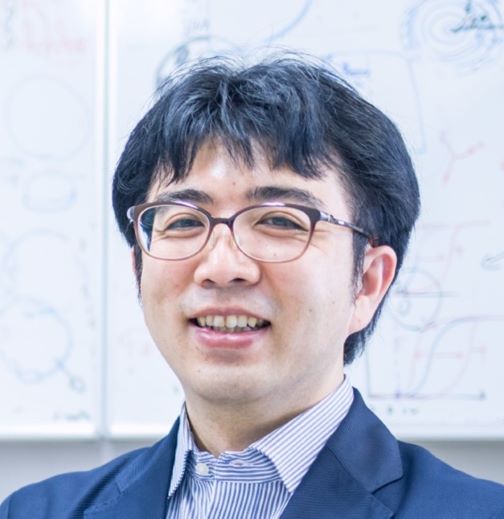
Professor Masahiro Takinoue, Tokyo Institute of Technology, Japan

Professor Masahiro Takinoue, Tokyo Institute of Technology, JapanMasahiro Takinoue is a biophysicist studying artificial cells, molecular computing, molecular robotics, and DNA nanotechnology. He received B.Sc. in Physics in 2002, M.Sc. in Physics in 2004, and Ph.D. in Physics in 2007 from The University of Tokyo, Japan. After serving as a postdoctoral fellow of Research Fellowship for Young Scientists of Japan Society for the Promotion of Science at the University of Tokyo (2007-2008), a postdoctoral fellow at the Department of Physics and Astronomy, Kyoto University, Japan (2008-2009), an assistant professor at Institute of Industrial Science, The University of Tokyo, Japan (2009-2011), he served as an associate professor at Tokyo Institute of Technology, Japan (2011-2022). He has been a full professor at Department of Computer Science, and Living Systems Materialogy (LiSM) Research Group, International Research Frontiers Initiative (IRFI), Tokyo Institute of Technology, Japan (2022-). He won several awards, such as The Young Scientists’ Prize from MEXT, Japan (2017). |
| 12:15 - 12:30 | Discussion |
| 12:30 - 13:30 | Lunch |
| 13:30 - 14:00 |
Building cells together
Engineering synthetic live cells is one of the biggest challenges of modern science. This is a bigger task than any single lab, university or country can accomplish. Organizing our community and facilitating collaborations across institutional and geographical barriers will not only help to achieve the science goals, but also provide a template for other international research collaborations. Fostering interactions, exchange of ideas and personal connections will help to build a new generation of researchers, and facilitate rapid progress shared across all participants. While results of our work belong to all stakeholders and need to be shared publicly, the nature of this work requires careful attention to biosafety, biosecurity and national competitiveness priorities. Engineering artificial cells will be a scientific breakthrough, with wide-ranging societal implications. Our community works to be ready for utilizing the scientific and economic benefits of engineering cells, and to work with the public and other communities on broad implications of our research. 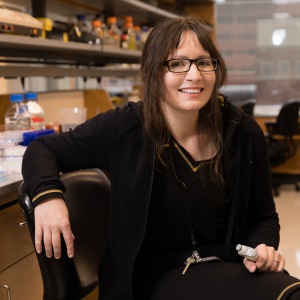
Dr Kate Adamala, University of Minnesota, USA

Dr Kate Adamala, University of Minnesota, USAKate Adamala is a biochemist building synthetic cells. Her research aims at understanding chemical principles of biology, using artificial cells to create new tools for bioengineering, drug development, and basic research. Kate’s research spans questions from the origin and earliest evolution of life, using synthetic biology to colonize space, to the future of biotechnology and medicine. |
|---|---|
| 14:00 - 14:15 | Discussion |
| 14:15 - 14:45 | Discussion |
| 14:15 - 14:45 |
Toward autonomous “artificial cells” on a chip
We study the assembly of programmable quasi-2D DNA compartments as “artificial cells” from the individual cellular level to multicellular communication. We will describe recent progress toward autonomous synthesis and assembly of cellular machines, synchrony, pattern formation, fuzzy decision-making, memory transactions, and electric field manipulation of gene expression. 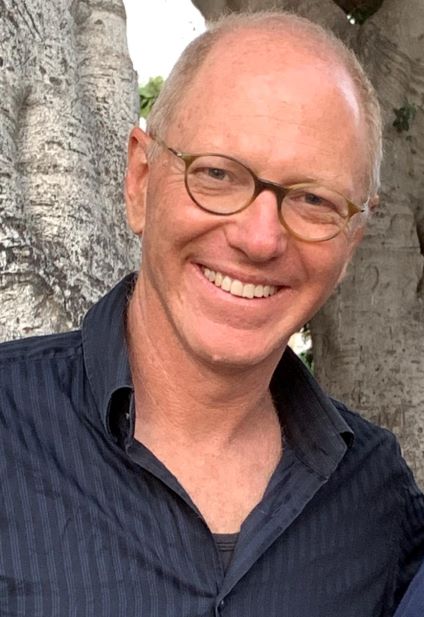
Dr Roy Bar Ziv, The Weizmann Institute of Science, Israel

Dr Roy Bar Ziv, The Weizmann Institute of Science, IsraelRoy Bar-Ziv is a professor at the Weizmann Institute of Science, Israel. He obtain a BSc in physics and mathematics from the Hebrew University, MSc in theoretical soft matter physics, and PhD in experimental physics from the Weizmann Institute, training with Elisha Moses and Sam Safran. His PhD work includes the discovery of the pearling instability in membranes. After a postdoc in biological physics at the Rockefeller University in New York with Albert Libchaber, where he observed a cascaded proofreading mechanism for DNA sequence recognition by protein binding fluctuations, and introduced the first gene circuits assembled in a cell-free protein synthesis reaction. In 2003 he returned to the Weizmann in 2003 as an independent PI, with research topics in biological and soft matter physics, synthetic biology, and nanotechnology: From DNA compartments as artificial cells on a chip, to non-equilibrium many-body phenomena in microfluidic droplets. |
| 15:00 - 15:30 | Tea Break |
| 15:30 - 16:00 |
Communication in synthetic tissues
By 3D printing, we have assembled synthetic tissues comprising of patterned networks of thousands of aqueous droplets joined by lipid bilayers. A related printing technology has been used to pattern a variety of living cells, providing structures that include small tumours and fragments of neural tissue. The mm-scale printed structures can be used as building blocks for cm-scale structures ranging from synthetic axons to hybrid constructs containing both synthetic and living cells. An important goal is to be able to communicate with these constructs through external stimuli, have them process the incoming signals and accordingly produce outputs that are useful, for example, in medicine. Progress on these aspects of signalling will be described in my talk. 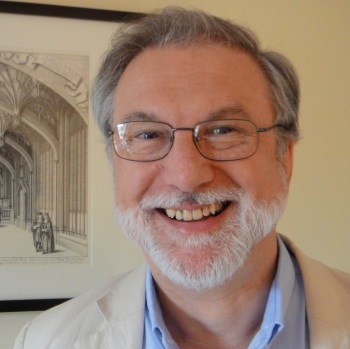
Professor Hagan Bayley FRS, University of Oxford, UK

Professor Hagan Bayley FRS, University of Oxford, UKHagan Bayley is the Professor of Chemical Biology at the University of Oxford. Major interests of his laboratory are the development of engineered pores for stochastic sensing, the study of covalent chemistry at the single molecule level, ultrarapid DNA sequencing and the fabrication of synthetic tissues. In 2005, Professor Bayley founded Oxford Nanopore to exploit the potential of stochastic sensing technology. The company has developed the MinION portable DNA sequencer. His research and entrepreneurial skills have been recognised several times. Professor Bayley was the 2009 Chemistry World Entrepreneur of the Year. In 2011, he was elected a Fellow of the Royal Society. In 2012 he was awarded the Royal Society of Chemistry's Interdisciplinary Prize, in 2017 the Menelaus Medal of the Learned Society of Wales and in 2019 the Mullard Award of the Royal Society. In 2018, Professor Bayley held the Kavli Chair at the Delft University of Technology. http://bayley.chem.ox.ac.uk/ |
| 16:00 - 16:15 | Discussion |
| 16:15 - 16:45 |
On biochemical constructors and synthetic cells
Cell-free synthetic biology emerged as a viable in vitro alternative for biological network engineering. Cell-free synthetic biology implements biological systems in a coupled transcription – translation reaction and therefore is a well-defined environment that is easier to control and interrogate than complex cellular systems. I will discuss several technological and methodological advances including the development of microfluidic chemostat devices, a high-throughput microfluidic device, and a method to easily produce a recombinant cell-free system. With these tools we were able to rapidly prototype genetic networks and transplant them into living hosts and engineered gene regulatory networks from the bottom-up with synthetic Zinc-finger transcriptional regulators. More recently, we were able to demonstrate that it is possible to create a partially self-regenerating cell-free system that continuously produces up to seven essential proteins and does so for an extended period of time. This work lays the foundation for the development of a biochemical constructor and may ultimately enable the creation of a synthetic cell. 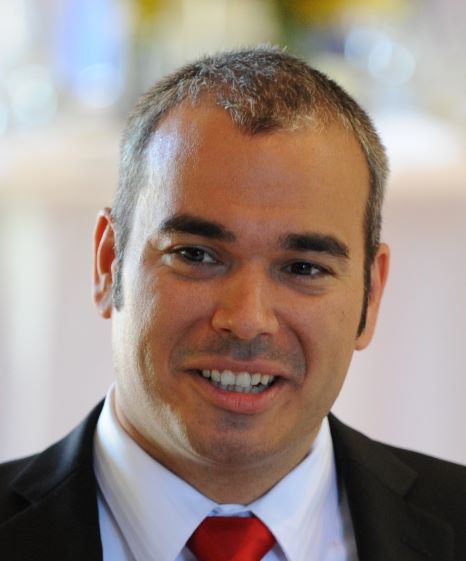
Dr Sebastian Maerkl, EPFL, Switzerland

Dr Sebastian Maerkl, EPFL, SwitzerlandProfessor Maerkl received bachelor degrees in Biology and in Chemistry and then joined the Biophysics and Biochemistry Department at the California Institute of Technology and contributed to the early development of microfluidic technology. For his graduate work Professor Maerkl was awarded the Demetriades-Tsafka-Kokalis prize for the best Caltech PhD thesis in the field of Biotechnology. After graduating in 2008, Professor Maerkl accepted a position as an Assistant Professor at the Ecole Polytechnique Federale de Lausanne (EPFL) in the Institute of Bioengineering and the School of Engineering and was promoted to Associate Professor with tenure in 2015. Professor Maerkl was awarded an ERC Consolidator Grant, an HFSP Program Grant, a SystemsX.ch RTD grant, a SNF Sinergia grant, and a SNF NRP 78 Covid-19 research grant, amongst others. His lab is currently working at the interface of micro-engineering, systems biology, synthetic biology, and molecular diagnostics. |
| 16:45 - 17:00 | Discussion |
| 17:00 - 18:00 | Poster Session |
| 09:30 - 09:45 | Discussion |
|---|---|
| 09:00 - 09:30 |
Bottom-up approaches to synthetic cellularity
Biology is well equipped in exploiting a large number of out of equilibrium processes to support life. A complete understanding of these mechanisms is still in its infancy due to the complexity and number of the individual components involved in the reactions. However, a bottom up approach allows us to replicate key biological processes using a small number of basic building blocks. Moreover, this methodology has the added advantage that properties and characteristics of the artificial cell can be readily tuned and adapted. Here, I will present strategies for the design and synthesis of artificial cells based on hydrophobic effects such as lipid vesicles and proteinosomes and liquid-liquid phase separation of oppositely charged components (coacervates) and describe how these compartments may be used as platforms for implementing dynamic biological behaviour. 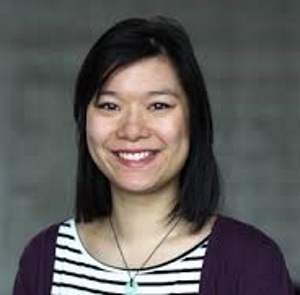
Dr TY Dora Tang, Max Planck Institute for Molecular Cell Biology and Genetics, Germany

Dr TY Dora Tang, Max Planck Institute for Molecular Cell Biology and Genetics, GermanyT-Y Dora Tang received her PhD from Imperial College London, UK, in 2010 in the area of membrane biophysics. After 1 year as an EPSRC knowledge transfer secondee at Diamond Light Source, Oxfordshire, UK she undertook a post-doc at the University of Bristol, UK, in the areas of origin of life and then synthetic biology. In 2016 she started her independent lab at the MPI-CBG, Dresden as part of the MaxSynBio consortium. Her research lies between biophysics, synthetic biology and materials chemistry with the goal of building minimal synthetic cellular systems as physical models to understand the role of compartmentalisation in the origin of life and in modern biology. |
| 09:45 - 10:15 |
Mammalian cells and their interaction with artificial cells
Bottom-up synthetic biology aims to substitute for missing/lost cellular activity or to add non-native function to mammalian cells and tissue. We focus on hydrogel-based artificial cells equipped with a specific life-like function, in particular, energy generation and cellular communication. The creation of self-sustaining systems require energy generation. In mammalian cells, mitochondria are responsible for the chemically driven adenosine triphosphate (ATP) synthesis. Here, mitochondria are used as a natural ATP producing subunit in hydrogel-based artificial cells. We co-encapsulated the ATP-dependent enzyme firefly luciferase with purified mitochondria to demonstrate the utilization of mitochondrially produced ATP in a cell-sized carrier, exemplified by the bioluminescent decarboxylation of D-luciferin. Collective behaviour in multicellular assemblies and on tissue level requires communication. Consequently, the integration of artificial cells with mammalian cells would benefit from supportive signal exchange between the artificial and natural entity. First, a one-way signal transfer is established by equipping two different types of artificial cells with catalytic function using metalloporphyrins as artificial enzymes that mimic cytochrome P450 enzyme (CYP450) activity. Second, artificial cells that can eavesdrop on mammalian cells in 2D and 3D are demonstrated. 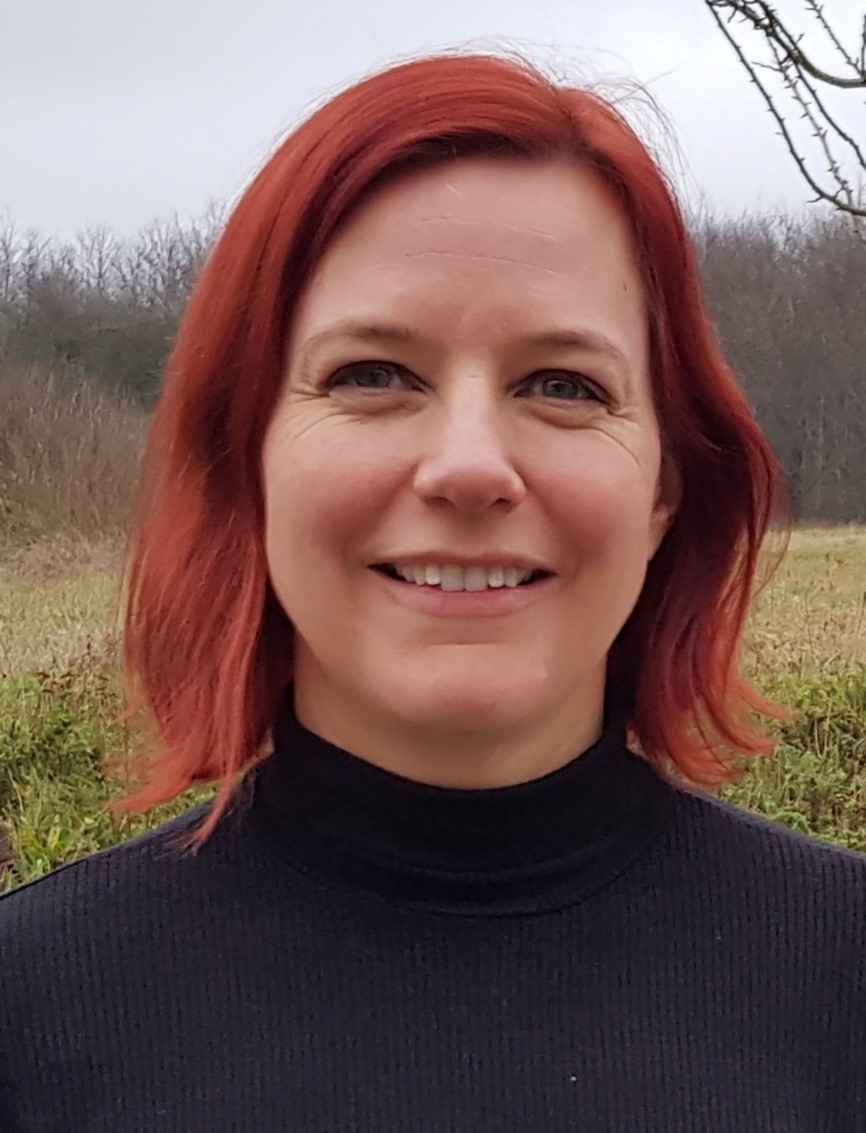
Professor Brigitte Städler, Aarhus University, Denmark

Professor Brigitte Städler, Aarhus University, DenmarkBrigitte Städler (ORCID: 0000-0002-7335-3945) is Associate Professor at the Interdisciplinary Nanoscience Center at Aarhus University, Denmark since 2015. Prior to this, she obtained her PhD from ETH Zurich, Switzerland followed by post doc time at the University of Melbourne, Australia and an Assistant Professor position at Aarhus University. Currently, she is the head of the ‘Laboratory for Cell Mimicry’, an interdisciplinary group working in the area of artificial biology focusing on nature inspired solutions to address medical challenges. Highlights include the first report on i) intracellularly active subcompartmentalised nanoreactors, ii) the integration of artificial cells with liver cells, and iii) directional self-propelled nanobots. She has published over 100 peer-reviewed publications, and obtained multiple fellowships including the L’Oreal/UNESCO - For Women in Science Fellowship, Denmark, the Carlsberg Foundation – Distinguished Associate Professor Fellowship and an ERC Consolidator Grant. |
| 10:15 - 10:30 | Discussion |
| 10:30 - 11:00 | Coffee break |
| 11:00 - 11:30 |
Harnessing membrane biophysical properties to investigate biological processes and design new therapeutic tools
Membranes play a vital role in a variety of physiological processes. Recapitulating these processes outside of the cell may allow us to better understand them as well as design an entirely new class of materials that can sense, transport, or target important biological signals and molecules. In this talk, I will present our recent work using model membranes (ex. liposomes and polymersomes) and cell-free expression systems to (1) uncover the role of membrane mechanical properties on the folding of model membrane proteins and (2) design a membrane-based nanoparticle for biosensing applications. First, I will describe how membrane physical properties, such as elasticity and hydrophobic thickness, impacts the folding, location, and integration of model membrane proteins. Next, I will describe our recent work to demonstrate how compartmentalization of cell-free extracts in membranes provides new capabilities for cell-free biosensing. Our approach, bridging synthetic biology techniques and model membrane assembly, provides an innovative yet simple method to probe the role of membrane composition and biophysical properties on protein dynamics and to advance the design of drug delivery carriers. 
Professor Neha Kamat, Northwestern University, US

Professor Neha Kamat, Northwestern University, USThe Kamat Lab's interests lie in constructing minimal systems, or artificial cells, as a tool to understand and recreate certain cellular behaviours. They use emerging engineering methods in material science and synthetic biology to construct in vitro models of cellular membranes that can couple membrane biophysical processes to chemical and genetic processes, yielding new cellular mimetic biomaterials, capable of complex sensing, signalling, and responsive behaviours. Their particular interests lie in understanding the role of the bilayer membrane in membrane protein folding and function and designing biosensors for environmental analytes. Neha received a BS in Bioengineering from Rice University and a PhD in Bioengineering from the University of Pennsylvania. She currently holds a Young Investigator Award from the Air Force Research Office, the ACS Synthetic Biology Young Innovator Award, and an NSF CAREER Award. |
| 11:30 - 11:45 | Discussion |
| 11:45 - 12:15 |
Membrane mimetic chemistry for artificial cells
A major goal of synthetic biology is to understand the transition between non-living matter and life. The bottom-up development of an artificial cell would provide a minimal system with which to study the border between chemistry and biology. So far, a fully synthetic cell has remained elusive but chemists are progressing towards this goal by reconstructing cellular subsystems. Cell boundaries, likely in the form of lipid membranes, were necessary for the emergence of life. In addition to providing a protective barrier between cellular cargo and the external environment, lipid compartments maintain homeostasis with other subsystems to regulate cellular processes. Our lab is exploring different chemical approaches for making cell-mimetic compartments. Synthetic strategies to drive membrane formation and function, including bioorthogonal ligations, dissipative self-assembly, and reconstitution of biochemical pathways, will be discussed. Chemical strategies aim to recreate the interactions between lipid membranes, the external environment, and internal biomolecules, and will clarify our understanding of life at the interface of chemistry and biology. 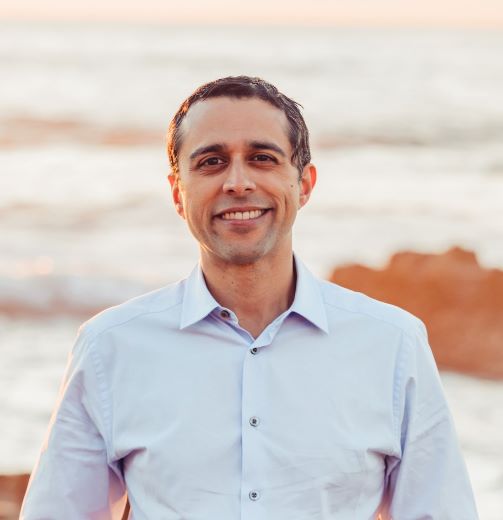
Professor Neal Devaraj, University of California San Diego, US

Professor Neal Devaraj, University of California San Diego, USNeal K Devaraj is a Professor and Murray Goodman Endowed Chair in the Department of Chemistry and Biochemistry at the University of California, San Diego. A major research thrust of his lab is understanding how non-living matter, such as simple organic molecules, can assemble to form life. Along these lines, he has developed approaches for the in situ synthesis of synthetic cell membranes by using selective reactions to ‘‘stitch’’ together lipid fragments. His lab has also made contributions towards applying bioconjugation reactions to understand the role of specific lipid species in living cells. His work has been recognized by the 2017 ACS Award in Pure Chemistry, being selected as the 2018 Blavatnik National Laureate in Chemistry, and the 2021 Tetrahedron Young Investigator Award in Bioorganic and Medicinal Chemistry. |
| 12:15 - 12:30 | Discussion |
| 12:30 - 13:30 | Lunch |
| 13:30 - 14:00 |
Synthetic Cells’ as targeted therapeutics for treating cancer and tissue engineering
Medicine is taking its first steps towards patient-specific cancer care. Nanoparticles have many potential benefits for treating cancer, including the ability to transport complex molecular cargoes including siRNA and protein, as well as targeting to specific cell populations. The talk will discuss ‘barcoded nanoparticles’ that target sites of cancer where they perform a programmed therapeutic task. Specifically, liposomes that diagnose the tumour and metastasis for their sensitivity to different medications, providing patient-specific drug activity information that can be used to improve the medication choice. The talk will also describe how liposomes can be used for degrading the pancreatic stroma to allow subsequent drug penetration into pancreatic adenocarcinoma, and how nanoparticle’ biodistribution and anti-cancer efficacy is impacted by patient’ sex and more specifically, the menstrual cycle. The evolution of drug delivery systems into synthetic cells, programmed nanoparticles that have an autonomous capacity to synthesize diagnostic and therapeutic proteins inside the body, and their promise for treating cancer and immunotherapy, will be discussed. 
Dr Avi Schroeder, Technion - Isreal Institute of Technology, Isreal

Dr Avi Schroeder, Technion - Isreal Institute of Technology, Isreal
Biography will available soon
|
|---|---|
| 14:00 - 14:15 | Discussion |
| 14:15 - 14:45 |
DNA nanotechnology as a platform to build synthetic cells
Living cells take advantage of spontaneous aggregation of certain proteins and RNA species to spatially and dynamically organize a variety of molecules and reactions. Taking inspiration from nature, our group is developing methods to build assemblies, condensates and patterns using structured motifs built with artificial DNA, that are relevant to the synthesis of self-regulated, autonomous biomaterials. I will present our recent results on controlling the rate of self-assembly and condensation and dissolution of artificial DNA motifs using chemical reactions. I will also discuss mathematical models that support and guide our experiments by capturing specific and non-specific interactions among the motifs. 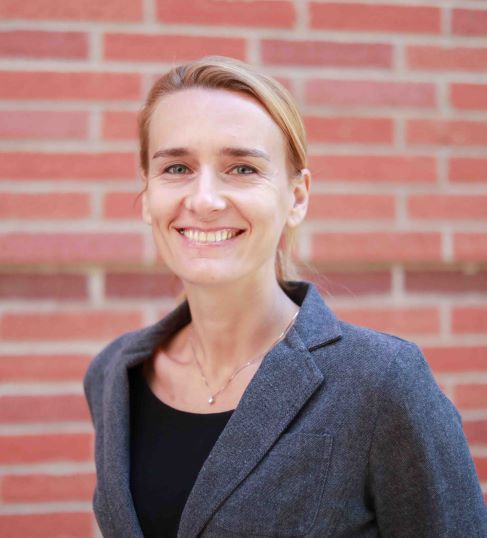
Professor Elisa Franco, University of California Los Angeles, US

Professor Elisa Franco, University of California Los Angeles, USElisa Franco is an Associate Professor in Mechanical & Aerospace Engineering and Bioengieering at UCLA. |
| 14:45 - 15:00 | Discussion |
| 15:00 - 15:30 | Tea break |
| 15:30 - 16:00 |
Matter to Life: Bottom-up assembly of synthetic cells
The evolution of cellular compartments for spatially and temporally controlled assembly of biological processes was an essential step in developing life by evolution. Synthetic approaches to cellular-like compartments are still lacking well-controlled functionalities, as would be needed for more complex synthetic cells. With the ultimate aim to construct life-like materials such as a living cell, matter-to-life strives to reconstitute cellular phenomena in vitro – disentangled from the complex environment of a cell. In recent years, working towards this ambitious goal gave new insights into the mechanisms governing life. With the fast-growing library of functional modules assembled for synthetic cells, their classification and integration become increasingly important. We will discuss strategies to reverse-engineer and recombine functional parts for synthetic eukaryotes, mimicking the characteristics of nature’s own prototype. Particularly, we will focus on large outer compartments, complex endomembrane systems with organelles and versatile cytoskeletons as hallmarks of eukaryotic life. Moreover, we identify microfluidics and DNA nanotechnology as two highly promising technologies which can achieve the integration of these functional modules into sophisticated multifunctional synthetic cells. 
Professor Joachim Spatz, Heidelberg University, Germany

Professor Joachim Spatz, Heidelberg University, GermanyJoachim P Spatz joined the Max Planck Institute for Medical Research in 2016 as Director. From 2004–2015 he was Director at the Max Planck Institute for Intelligent Systems (former MPI for Metals Research). Since then he has also been a Full Professor at the University of Heidelberg and head of the Department of Biophysical Chemistry. He was an Associate Professor for Biophysical Chemistry at the University of Heidelberg from 2000–2004. From 1999–2000 he received his habilitation in Physics at the University of Ulm. He was a PostDoc in the group of Professor Jacques Prost and Albrecht Ott at the Institut Curie, Paris, in 1997–1998. He received his Diploma in Physics (1994) and his PhD in Physics (1996) from the University of Ulm under the supervision of Professor Möller (founding Director of the Leibniz Institute of Interactive Materials in Aachen). He is a member of the Heidelberg Academy of Sciences and Humanities. Among other awards, he received the Gottfried Wilhelm Leibniz Prize of the German Science Foundation in 2017. |
| 16:00 - 16:15 | Discussion |
| 16:15 - 16:45 |
Establishing cell-free systems to enable a fair and sustainable 21st bio-century
Synthetic biology (SB) is one of the most promising fields of research for the 21st century. SB offers powerful new ways to improve human health, build the global economy, manufacture sustainable materials, and address climate change. However, current access to SB-enabled breakthroughs is unequal, largely due to bottlenecks in infrastructure and education. Here, I describe our efforts to re-think the way we engineer biology using cell-free systems to address these bottlenecks. We show how the ability to readily store, distribute, and activate low-cost, freeze-dried cell-free systems by simply adding water has opened new opportunities for on-demand biomanufacturing of vaccines for global health, point-of-care diagnostics for environmental safety, and education for SB literacy and citizenship. By integrating cell-free systems with artificial intelligence (AI), we also show the ability to accelerate the production of carbon-negative platform chemicals. Looking forward, advances in engineering tools and new knowledge underpinning the fundamental science of living matter will ensure that SB helps solve humanity’s most pressing challenges. 
Professor Mike Jewett, Northwestern University, US

Professor Mike Jewett, Northwestern University, US
Biography will available soon
|
| 16:45 - 17:00 | Discussion |
| 17:00 - 17:15 | Panel discussion |




